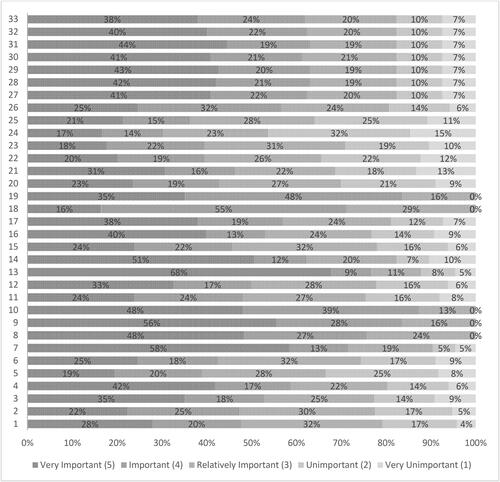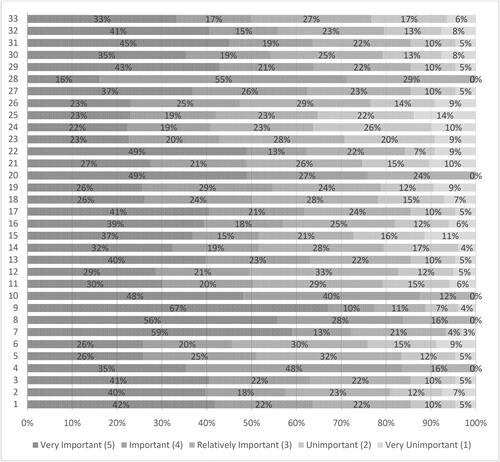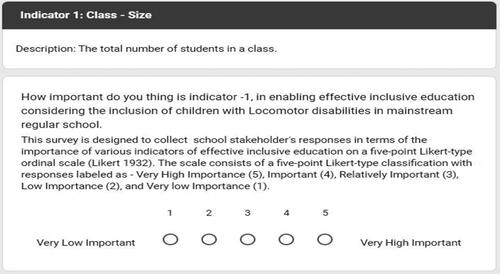Figures & data
Table 1. Indicators of effective inclusive education (IEIE) for an inclusive school.
Figure 2. Summarizes the responses from school stakeholders regarding the importance of various IEIE in Primary Schools with respect to the inclusion of CwLDs.

Figure 3. Summarizes the responses from school stakeholders regarding the importance of various IEIE in Primary Schools with respect to the inclusion of CwPDs.Note: here for both cases (CwLDs and CwPDs) in , legends; 1- Class-Size, 2- Teaching Strategies, 3- curriculum, 4- Student-Teachers Ratio, 5- Administrative support, 6- Participation of CWSN in co-curricular activities, 7- Enrollment of CWSN, 8- Are you differently-abled, 9- Type of disability- you belong, 10- Severity of disability, 11- financial support, 12- Policies, 13- Availability of therapeutic care center, 14- Availability of paraprofessional staff, 15- Availability of resources, 16- Special training for regular teachers & staff, 17- Vocational training courses, 18- Teacher’s educational qualification, 19- Teaching experience, 20- Trained/Untrained w.r.t. CWSN, 21- Proficient or not w.r.t. operating special devices, 22- Awareness about UDL, 23- Teacher’s Attitude, 24- Awareness & sensitization w.r.t. disability, 25- Parents/Community involvement, 26- Acceptability & mutual respect, 27- Accessibility to site entry and school premises, 28- Accessibility to vertical and horizontal movement, 29- Accessibility to wash and other facilities, 30- Accessibility to exit, way-finding and communication, 31- Accessibility to academic spaces, 32- Accessibility to extra-curricular activities, 33- Accessibility to digital infrastructure.

Table 2. Cronbach’s Alpha Coefficient Test (to assess response reliability of data in case of CwLDs inclusion perspective).
Table 3. Cronbach’s Alpha Coefficient Test (to assess response reliability of data in case of CwPDs inclusion perspective).
Table 4. Effective Inclusive Education Indicator’s Priority List Using RIDIT Analysis for both the cases of inclusion (CwLDs and CwPDs) in Mainstream Primary School.
Table 5. Effective Inclusive Education Indicator’s Priority List Using Grey Relation Analysis (GRA) for both the cases of inclusion (CwLDs and CwPDs) in Mainstream Primary School.
Table 6. Effective Inclusive Education Indicator’s Priority List using TOPSIS Method for both the cases of inclusion (CwLDs and CwPDs).
Table 7. Comparative Ranking of IEIE Using TOPSIS, RIDIT, and GRA for both the cases of inclusion (CwLDs and CwPDs).
Table 8. Spearman’s rank order correlation coefficient between RIDIT, GRA and TOPSIS for both cases of inclusion (CwLDs and CwPDs).

